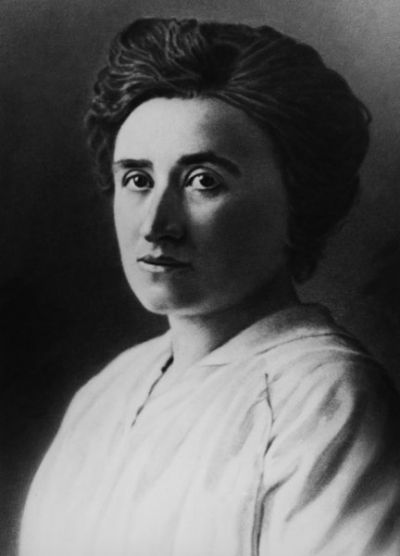Pola Negri

Pola Negri finished her ballet school in Warsaw almost by accident, or as many people jokingly say with the help of God, because the lively girl felt very uncomfortable in her monastery school in Warsaw. She was not only a very talented but also a very industrious student. That said, her career as a ballet dancer came to an end as a result of an illness. But her ambition and her will to be an actress brought her back to the stage. She took acting lessons from the famous drama teacher, Honorata Leszczyńska, where she learnt a huge amount at a very quick rate. Hence she made her theatre debut on 1st September 1912 in the Warsaw theatre “Teatr Maly”, playing the role of Anielka Dobrojska in Aleksander Fredro’s play “Śluby panieńskie” (The Girls Oath) at the tender age of 15. The critics reacted to her with great enthusiasm and theatres fought to engage her. Finally Kazimierz Hulewicz discovered her for the screen. He wrote a film script especially for her entitled “Niewolnica zmysłów” (The Slave of Passion), directed by Jan Pawłowski with Pola Negri in the leading role, which had its premiere on 25th December 1914. Once more Pola Negri’s performance was greeted with great enthusiasm. She appeared in eight further Polish films before continuing her career in Berlin. In 1917 the first German film featuring Pola Negri – “Happiness did not Fool me for Long“ by Kurt Matull – was shown in cinemas. Although she was unable to fulfil her potential to the full in her first German films she was nevertheless highly praised. It was only after she came into contact with the young and very talented director Ernst Lubitsch that she was able to take advantage of new opportunities to express herself artistically. Lubitsch’s major breakthrough came in 1918 with the premiere of his monumental film “The Eyes of Mummy Ma”. For Pola Negri this was the highest point in her career to date. Others were to follow. Thanks to Lubitsch and his films “Carmen” (1918), “Madame Dubarry” (1919) and “Sumurun” (1920) she began to get lucrative offers. Pola Negri’s performances also made her highly popular internationally.
During this time in Germany she was also called the “Duse of the Screen”, a reference to the famous theatre actress Eleonora Duse, and a clear sign of the general recognition of her talent and performances. She made over 20 films in Berlin until she received a lucrative contract from Paramount pictures in Hollywood. In 1922 – she was 25 at the time – Pola Negri flew to America where she was to become one of the very few superstars in the silent movie era. It was not until the end of the 1920s that her star began to decline and for this reason she decided to return to Germany. Germany in the 1930s had very little in common with what she knew from her first stay in Berlin. The Nazis were now in power and controlled every area of life including the cinema industry. At the mercy of Nazi propaganda she made only a very few films in Berlin, including pearls like “Mazurka” (1935), “Moscow - Shanghai” (1936) and “Tango Notturno” (1937). In 1938 she left Germany to return to America via France. But this time she was unable to repeat her previous successes. The silent movie era had come to an end and with it also its stars. Pola Negri remained in America until her death interspersed with only a few short visits to Germany. In 1964 the Berlin Film Festival showed a retrospective of her films. For the last time she showed herself on the red carpet, as captivating as ever – Pola Negri.
Biographical data
Pola Negri, real name Barbara Apolonia Chałupiec
1897 Born on 3rd January in Lipno (Poland)
1904 Moves to Warsaw
1912 Theatre debut in Warsaw (Teatr Maly / “Sluby panienskie”)
1914 Film debut in Warsaw (“Niewolnica zmyslow”. Director: Jan Pawlowski)
1917 - 1923 Film work in Berlin
1922 Moves to the USA
1923 - 1928 Film work in the USA
1934 Moves back to Berlin
1938 Leaves Germany for America via France
1964 Pola Negri’s final film “The Moon-Spinners”
On 1 August 1987 Pola Negri dies in San Antonio (USA)
Additional information:
Pola Negri interrupted her ballet education because of tuberculosis. She recovered in the spa town of Zakopane, where she not only sought the power to live but also artistic inspiration which she found in the poems of the Italian poet Ada Negri. Fascinated by her works Apolonia Chalupec adopted the pseudonym: Pola Negri.
She sought for happiness in love in vain. She was married twice, neither of them very happy: in 1919 to the Polish Count Eugeniusz Dambski, and in 1927 to the Georgian Prince (the title was not genuine) Sergius Midivani. Both marriages ended in divorce. In the meantime and also afterwards she was involved in many affairs. The most famous was with Charlie Chaplin and the subsequent war of the roses; the most tragic with Rudolfo Valentino who died after an operation, shortly before his alleged marriage to Pola Negri.
“Mazurka” with Pola Negri in the leading role was alleged to be one of Adolf Hitler’s favourite films. He is supposed to have idolised her even though Pola Negri (Apolonia Chalupec), was unable to provide the authorities with any proof that she was Aryan. No less than the propaganda minister Joseph Goebbels in person officially confirmed that she could not possibly be Jewish.
In 1972 in Berlin Chancellor Willy Brandt awarded her with the Gerhart Hauptmann Medal in Gold.
Notable quotation:
“In the cinema it’s just like in life, you have to get a good place!”
Filmography:
Poland
1914 Niewolnica zmysłów (The Slave of Passion)
1915 Żona (The Wife)
1915 Czarna książeczka (Black Book)
1916 Studenci (Student Love)
1917 Bestia (The Beast)
1917 Arabella
1917 Pokój nr 13 (Wabda Barska)
1917 Tajemnica Alei Ujazdowskich
1917 Jego ostatni czyn (His Final Deed)
Germany
1917 Stealing Kisses in the Dark (Za pocałunek-wieczystych nocy męki)
1917 Happiness did not Fool me for Long (Niedługo mnie szczęście łudziło)
1917 Dead Eyes (Martwe oczy)
1917 When the Heart burns with Hate (Gdy serce nienawiścią pała)
1917 Roses destroyed by the Storm
1917 Unfettered Blood (Rozpasana)
1918 The Eyes of Mummy Ma (Oczy mumii Ma)
1918 Carmen
1918 Mania - the Story of a Cigarette Worker (Mania)
1918 The Yellow Passport (Żółty paszport)
1919 Crucify Her! (Awanturnica)
1919 Vendetta (Vendeta - Zemsta krwi)
1919 The Carousel of Life (Dzieje mężatki)
1919 Countess Dolly (Hrabina Rondoli)
1919 Madame Dubarry
1920 The Marquise d'Armiani (Markiza d'Arminiani)
1920 Poor Violetta (Biedna Violetta)
1920 The Closed Chain
1920 Martyrdom
1920 Sumurun
1921 Sappho (Safona)
1921 The Mountain Cat (Dzika kotka)
1922 The Flame
USA
1923 Hollywood
1923 Bella Donna
1923 The Cheat
1923 The Spanish Dancer
1924 Men
1924 Lily of the Dust
1924 Shadows of Paris
1924 Forbidden Paradise
1925 A Woman of the World
1925 Flower of the Night
1925 East of Suez
1925 The Charmer
1926 The Crown of Lies
1926 Good and Naughty
1927 Barbed Wire
1927 The Woman on Trial
1927 Hotel Imperial
1928 The Secret Hour
1928 Three Sinners
1928 The Woman from Moscow
1928 Loves of an Actress
Europe
1929 The Way of Lost Souls/The Woman He Scorned
1932 A Woman Commands
1934 Fanatisme
1935 Mazurka
1936 Countess Volescu
1936 Moscow-Shanghai
1937 Madame Bovary
1937 Tango Notturno
1938 The Pious Lie (Pobożne kłamstwo)
1938 The Night of Decision
USA
1943 He Diddle Diddle
1964 The Moon-Spinners
Adam Gusowski, June 2014
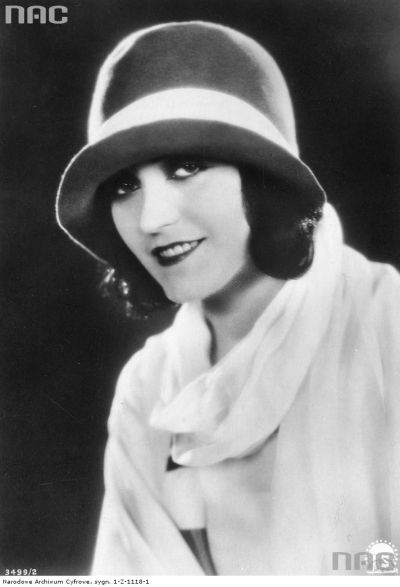
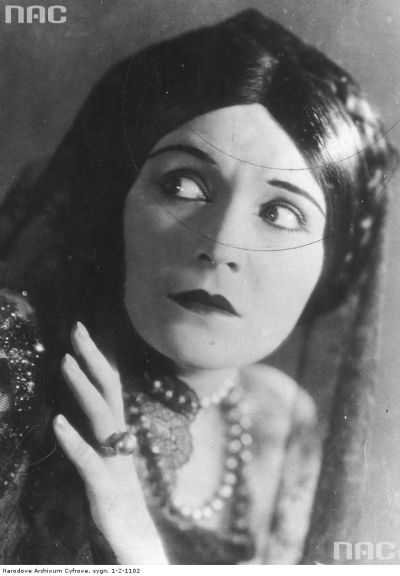

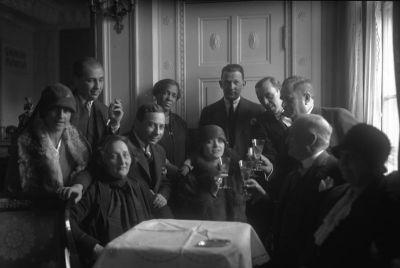
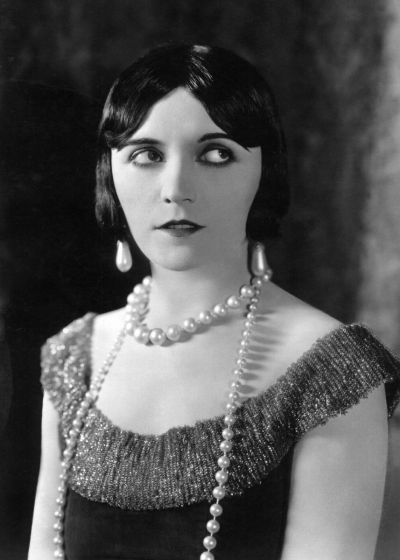

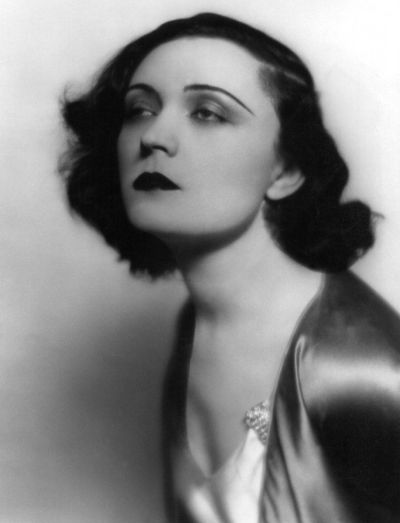

![„Pola Negri - unsterblich“ [‘Pola Negri - immortal’] „Pola Negri - unsterblich“ [‘Pola Negri - immortal’] - A film documentary about the life and work of one of Germany's greatest silent film stars of Polish origin. (German)](/sites/default/files/styles/width_100_tiles/public/pola_negri_-_filmstill_2_0.jpg?itok=2xsBI27X)



